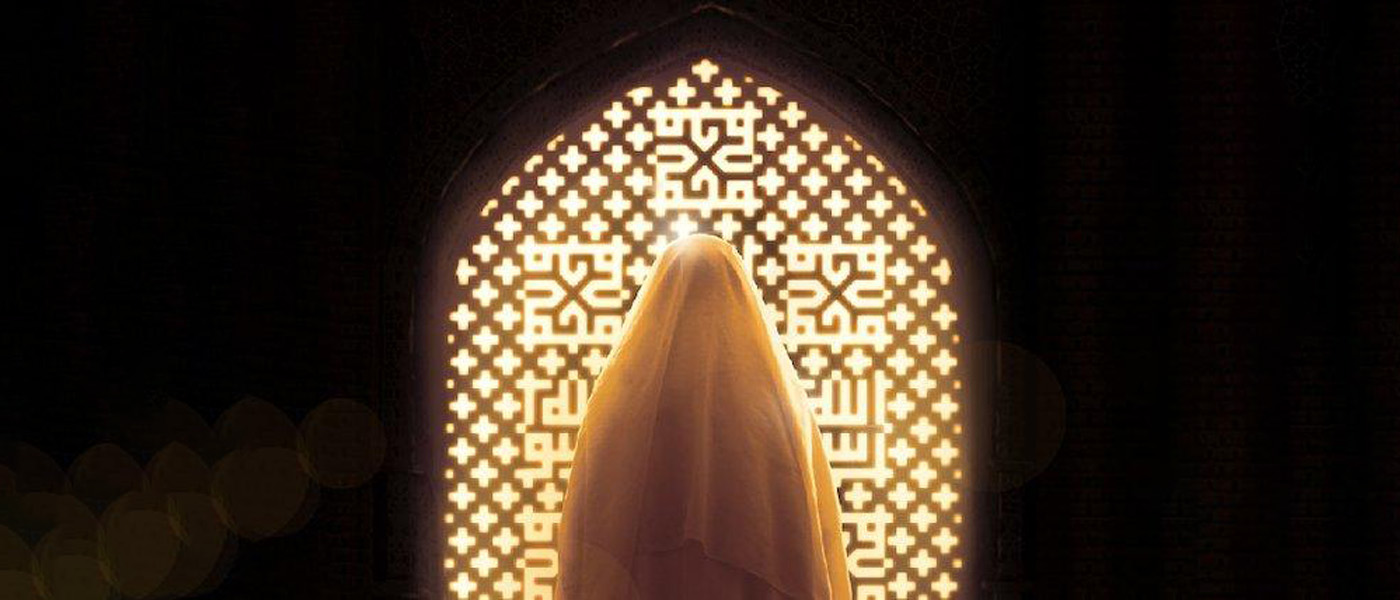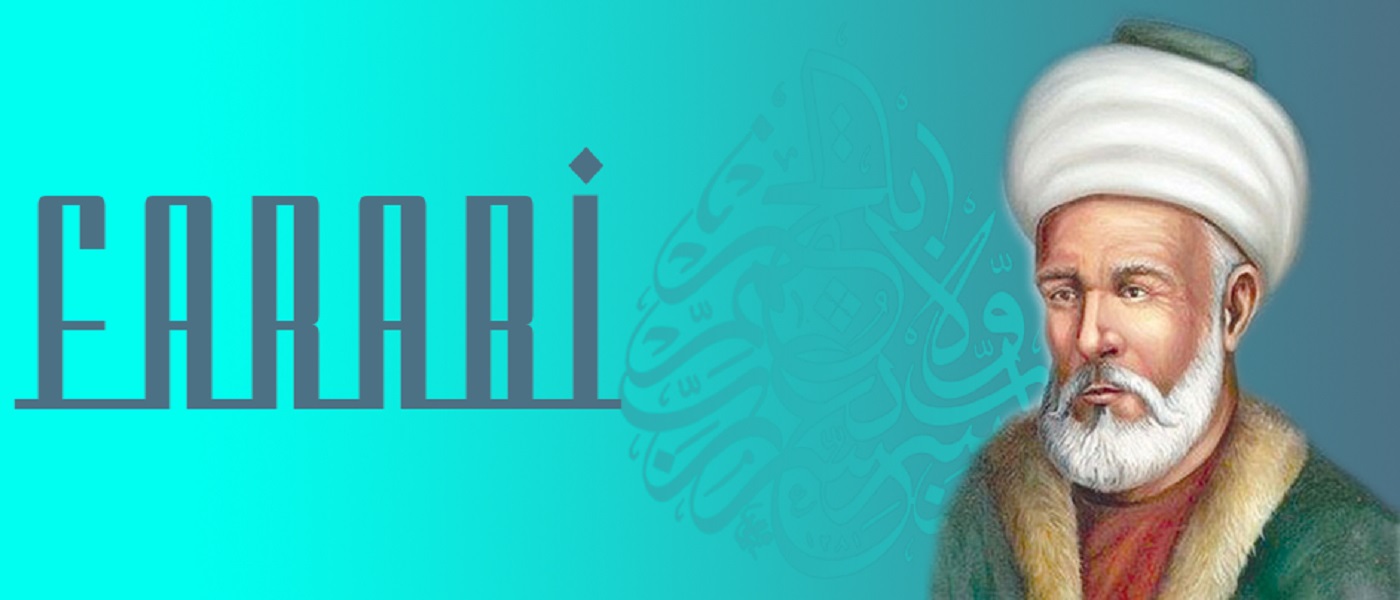

Facts about Lady Khadija (AS), the Wife of Prophet Muhammad (PBUH&HP)
Throughout the history of humankind, strong women have always been a source of inspiration and growth. Women who, alongside men, brought significant changes to the world, making it a better place to live and to prosper. One of the most prominent and praised women in the history of Islam is Lady Khadija (AS), Prophet Muhammad's (PBUH&HP) wife and companion, who had a vital role in the spread of Islam. She was one of those women whose influence and exceptional characteristics still resonates throughout the ages and among many generations after her.
In what follows, we will look at the life of Lady Khadija (AS), this distinguished personality.
Birth and Lineage
Known as Khadīja al-Kubrā (AS) and Umm al-Mu' minīn (the Mother of Believers), Lady Khadija (AS) was born fifteen years before Am Al-Fil [i]. Therefore, her birth date is approximately 555 A.D. Her father, a famous figure in the Quraysh tribe in Mecca, was Khuwaylid b. Asad b. Abd al-Uzza b. Qusayy [1] and her mother was Fatima bt. Za'ida [2]. According to some sources, Lady Khadija (AS) had a distant relation in lineage with Prophet Muhammad (PBUH&HP), and their roots went back to the same ancestors [3].
Lady Khadija (AS)'s Reputation before Marrying Prophet Muhammad (PBUH&HP)
The available information concerning Lady Khadija (AS) before marrying Prophet Muhammad (PBUH&HP) is limited and scarce. Nevertheless, she was known to be a wealthy merchant who employed others to work for her and benefited from a part of the profit [4]. Due to her ancestral nobility, she was of high social status and respected among her people. As Ibn Sayyid al-Nas said: "She was an honorable and wise lady, and God granted her with His blessing." [5]
Meeting Prophet Muhammad (PBUH&HP)
According to some sources, before meeting Prophet Muhammad (PBUH&HP) in person and starting a business relation with him, Lady Khadija (AS) had heard about his trustworthiness and honesty. Therefore, she asked Muhammad (PBUH&HP) to join her and help her in expanding her business [6].
Prophet Muhammad (PBUH&HP) went at least five business trips for Lady Khadija (AS), the most important of which that led to their marriage was the business trip to Sham. Prophet Muhammad (PBUH&HP) went back from this trip with the good news of their financial success and profit, which impressed Lady Khadija (AS) and made her decide to choose him as the head of one of the greatest caravans traveling to Sham. The result of these trips and Prophet Muhammad's (PBUH&HP) impressive actions, was Lady Khadija's (AS) fondness toward this honest man [7]. After that, she proposed marriage to Prophet Muhammad (PBUH&HP) [8].
Marriage to Prophet Muhammad (PBUH&HP)
Despite the disputes over Lady Khadija's (AS) marriage before Prophet Muhammad (PBUH&HP), which claim her to be a widow, many authentic sources believe that Lady Khadija (AS) did not marry anyone before the Prophet (PBUH&HP) and it was her first marriage [9]. This is also proved by looking at the cultural and intellectual status of Lady Khadija (AS) in Hijaz, which made it improbable for her to marry anyone from lower-status tribes [10].
While receiving many proposals for marriage from the heads of Quraysh, offering her vast amounts of money and wealth, she refused all and instead fell in love with the honesty and righteousness of Prophet Muhammad (PBUH&HP). The news of this proposal shocked Lady Khadija's (AS) family and relatives, who couldn't believe her to be willing to marry a man with lower financial status and younger than herself [11].
The proposal and marriage ceremony of these two significant figures, who made an example of their marriage to the generations that followed them, was held two months after the business trip to Sham, which was mentioned above [12]. According to many sources, at the time of their marriage, Prophet Muhammad (PBUH&HP) was twenty-five, and Lady Khadija (AS), forty years old [13]. After their marriage, she dedicated all her wealth to her husband and left the management of her business to him. Lady Khadija (AS) was the first wife of the Prophet Muhammad (PBUH&HP), and during her life, he did not marry another woman.
Lady Khadija (AS)'s Children
There seems to be disagreement in the number of Lady Khadija (AS) and Prophet Muhammad's (PBUH&HP) children. The number ranges from six to eight, among which they include two sons and four daughters [14]. Some historians believe that Lady Fatima (AS) was the only daughter of the Prophet Muhammad (PBUH&HP) and Khadija (AS) and the other daughters were their adopted children [15].
Embracing Islam
After receiving the call to prophethood in the Hira cave, Prophet Muhammad (PBUH&HP) first told Khadija (AS) and Imam Ali (AS) about his prophetic mission. She totally trusted her husband to be an honest man and believed in his great cause; therefore, she was the first woman who accepted Prophet Muhammad's (PBUH&HP) invitation to Islam and became a devout Muslim. Imam Ali (AS) and Lady Khadija (AS) were also the first ones who performed prayer (Salat) alongside Prophet Muhammad (PBUH&HP) in the mosque [16].
Sacrifices for Islam and Muslims
As a wife, Lady Khadija (AS) always supported Prophet Muhammad (PBUH&HP) in fulfilling his extraordinarily challenging and demanding mission of guiding people toward the path of Allah. At the times when people hurt the Prophet (PBUH&HP) with their offenses and unfair accusations, Khadija (AS) was there to soothe him, wipe his sadness away and give him hope to endure the hardships of this holy mission. She also financially supported Prophet Muhammad (PBUH&HP) when they were suffering from unfair economic sanctions in the Shaib al-Abi Talib [17]. Prophet Muhammad (PBUH&HP) always appreciated Lady Khadija's (AS) unbounded help and support and said: "No money was profitable for me the way the wealth of Khadija (a) was." [18]
Notable Characteristics
One of The Best Women of all Times
Prophet Muhammad (PBUH&HP) always loved and praised Lady Khadija (AS) for her great and exemplary personality. He used to consider her among the four praised women of all time, including Asiya [ii], Mary, and Lady Fatima (AS) [19]. She was not only a prominent and influential figure of her own time but also set an example for the generations that followed her. Her power in merchandise and business at one point, her courage, and insight in choosing a perfect husband by herself and her devotion to her married life at another, made her an ideal role model for the women all around the world.
The Wise Lady
As it was mentioned above, Lady Khadija (AS) was a well-known woman before her marriage to Prophet Muhammad (PBUH&HP). She was famous for her knowledge and sagacity, which manifested in her thriving business, whose fame reached all over the Hijaz. Despite the patriarchal society of her time, she had managed to establish herself as a powerful businesswoman who won the respect of great heads of the tribes and men who considered women inferior to themselves [20].
The Modest Lady
While having an active and productive role in society, Lady Khadija (AS) always preserved her modesty and presented a modest manner in her interactions with men. Doing so, rather than being praised for her physical beauty, she was honored and respected for her insight and chastity, which encouraged many of the powerful men of her time to ask her hand in marriage. Yet, since she was more interested in finding an honest and virtuous man to marry, rather than a merely wealthy man, she refused all her suitors. Finally, she found these features in Prophet Muhammad (PBUH&HP) and chose him as her perfect match.
The Devout and Beloved Companion
When she made a vow of marriage to the honest Muhammad (PBUH&HP), she knew that her life with this man would be different. When Prophet Muhammad's (PBUH&HP) mission began, she realized how much he was under pressure and needed her companionship and support. People didn't believe in him, didn't listen to him, and refused to be guided through the words of Allah, especially in the first years of his invitation to Islam. Yet, at home, he had someone who was always by his side, wipe his sadness away, and had faith in his call. Prophet Muhammad (PBUH&HP) never loved any woman as Lady Khadija (AS), and never forgot about her love and sacrifices, always remembering her as a unique and precious person in his life [21].
Lady Khadija (AS)'s Demise
Lady Khadija (AS), this honorable woman, passed away in the month of Ramadan ten years after Prophet Muhammad's (PBUH&HP) call to prophethood in 619 A.D. She was 65 years old at the time of her demise [22], [23]. She was buried by Prophet Muhammad (PBUH&HP) in al-Ma'lat Cemetery, on the slopes of Mount Al-Hajun in Mecca. This sorrow was shortly followed by the demise of Abu-Talib, Prophet Muhammad's (PBUH&HP) uncle. These tragic incidents afflicted Prophet Muhammad (PBUH&HP) with deep grief to the extent that he named that year as "the year of sorrow and pain (Am al-Huzn) [24].
Notes:
[i] Literally meaning the year of the Elephant, it is the year in which Abraha, the king of Yemen, started a huge military expedition toward Mecca to destroy Ka'ba. As he had an army with war elephants, the year turned to be known as the year of the Elephant.
[ii] Pharaoh's wife at the time of Prophet Moses (PBUH)
References:
- Ibn Athīr al-Jazarī, ʿAlī b. Muḥammad. Usd al-ghāba fī maʿrifat al-ṣaḥāba. Beirut: Dār al-Fikr, 1409 AH. Vol.6, p.87.
- Ibn ʿAbd al-Barr, Yūsuf b. Abd Allah. Al-Istīʿāb fī maʿrifat al-aṣḥāb. Edited by ʿAlī Muḥammad al-Bajāwī.
- Abu l-Faraj al-Isfahani, Maqatil al-talibiyyin, p.29.
- Ibn Kathīr al-Dimashqī, Ismāʿīl b. ʿUmar. Al-Bidāya wa l-nihāya. Beirut: Dār al-Fikr, 1407AH-1986. Vol. 2, p. 293.
- Ibn Sayyid al-Nās, Abū l-Fatḥ Muḥammad. ʿUyūn al-athar fī funūn al-maghāzī wa l-shamāʾil wa l-sayr.
- Abd al-Malik Ibn Hisham, Sirat Ibn Hisham, Edited by Mustafa Saqa. Beirut: Dar Ahya al-Tarath al-Arabi, vol.1, pp.187-188.
- ibid, vol.1, pp.199-200.
- Ibn Sayyid al-Nās, Abū l-Fatḥ Muḥammad. ʿUyūn al-athar fī funūn al-maghāzī wa l-shamāʾil wa l-sayr. Vol.1, p.63.
- Ibn Shahrāshūb, Muḥammad b. ʿAlī. Manāqib Āl Abī Ṭālib. Qom: ʿAllāma, 1379 AH. Vol. 1, p. 159.
- ʿĀmilī, Jaʿfar Murtaḍā al-. Al-Ṣaḥīḥ min sīrat al-Nabīyy l-aʿẓam. Beirut: Dār al-Hādī, 1415 Ah. Vol. 2, p. 123.
- Abd al-Malik Ibn Hisham, Sirat Ibn Hisham, vol.1, p. 189.
- Maqrizi, Ahmad Ibn Ali, Imta al-Asma, Dar al-Kutub al-Ilmiyah, 1999. Vol.1, p.17.
- Muhammad Ibn Sa'ad, Al-Tabaqat al-Kabir (The Book of the Major Classes), vol.8, p.17.
- Ziriklī, Khayr al-dīn al-. Al-Aʿlām Qāmūs trājm l-ashhar al-rijal wa l-nisāʾ min al-ʿArab wa l-mustaʿribīn wa l-mustashriqīn.
- ʿĀmilī, al-Ṣaḥīḥ min sīrat al-Nabī, vol. 2, p. 207-220.
- Ibn ʿAbd al-Barr, al-Istīʿāb, vol. 3, p. 1089.
- Shaykh Tabarsi, I'lam al-Wara bi A'lam al-Huda, vol.1, p.125.
- Majlisī, Muḥammad Bāqir al-. Biḥār al-anwār al-jāmiʿa li-durar akhbār al-aʾimmat al-aṭhār.
- Ibn Kathīr, al-Bidāya wa l-nihāya, vol. 2, p. 129.
- Abu l-Hasan 'Ali b. Muhammad Julabi, Manaqib al-Imam Ali b. Abi Talib, vol.2, p.422.
- Sayyid Ali b. Tawus al-Husayni al-Hilli, Al-Tara'if fi ma'rifat madhahib al-tawa'if, vol.1, p.291.
- Ibn ʿAbd al-Barr, al-Istīʿāb, vol. 4, p. 1817.
- Ṭabarī, Muḥammad b. Jarīr al-. Tārīkh al-Ṭabarī. Edited by Muḥammad Ibrāhim.
- Maqrizī, Imtāʿ al-asmāʾ, vol. 1, p. 45.
Share This Article

Al Farabi The Second Master
Had it not been for his coherent explanations on Aristotle’s Metaphysics, Avicenna would probably never have been able to understand it; he read Aristotle forty times, but it was just through the straightforward and comprehensive commentaries of Al Farabi that he finally realized Aristotle’s ideas on Metaphysics.
The great Muslim philosopher, logician, and cosmologist, Abu Nasr Muhammad ibn Muhammad Farabi, was born in 872 A.D. in Farab, Khurasan, to Iranian parents. He spent most of his life in Baghdad and from a very early youth started learning the teachings of Islam and the Holy Quran under the training of the best Islamic philosophers and scholars. He traveled to many countries, including Egypt and Syria. He died in 950 or 951 A.D. in Damascus, Syria.
In philosophy, he is considered to be the second in rank after Aristotle, and is called “the second teacher” and on some occasions “the second master” [1]. His wise and easy to understand explanations shed a clear light on the complex philosophy of Aristotle, to the point that many western philosophers owed their appreciation of “the first teacher”’s philosophy to Al-Farabi [2].
Moreover, he is the founder of Islamic philosophy. He genuinely believed in the existence of the first cause -God, Allah- and admitted the limits of human knowledge in understanding the nature of it [3].
In one of his most notable works “Al-Madina Al-Fadila” (The Virtuous City) which is basically about political philosophy, he argues that the favorable form of government is the one ruled by a prophet or Imam. Accordingly, the city of Medina when it was ruled by Prophet Muhammad (PBUH) was the ideal kind of society that would ultimately guide human beings to everlasting felicity both in this world and the world that is to come.
He also criticized those philosophers who do not utilize their knowledge for the benefit of their society. He compared the philosopher's role in society with a physician’s relation to the body; the body's health is affected by the 'balance of its humors just as the city is determined by the moral habits of its people. The philosopher's duty, he says, is to establish a ‘virtuous’ society by healing the souls of people, establishing justice, and guiding them towards 'true happiness' [4].
He was also a grandmaster of music; “He is said to have created musical compositions. To this day there are melodies in Anatolian music and rags in classical North Indian music attributed to him, sung and performed by masters of these musical genres”[5]. His famous book on music, Kitab al-musiqi al-Kabir ("The Great Book of Music"), is the study of the theory of Persian music and the philosophical principles of music, its cosmic qualities, and influence.
His other well-known book is called Kitab ihsa al-ulum ("On the Introduction of Knowledge"). It consists of eight parts, each dealing with one branch of science such as linguistics, logic, mathematics, astronomy, metaphysics, Islamic jurisprudence, Islamic science of dialectic and discourse, as well as politics[6].
Finally, Al-Farabi, one of the greatest Muslim philosophers, is a universal phenomenon whose innovative and sensible ideas marked a turning point in the history of philosophy. His philosophy was easy to understand and apply to real-life which is the essence of the sharia of Islam; a religion with rules that are highly compatible with human nature and if followed would bring satisfaction as well as peace.
References:
- Ian Richard Netton. “al-Farabi, Abu Nasr" .Islamic Philosophy from the Routledge Encyclopedia of Philosophy.
- F.W Zimmermann, Al-Farabi 's Commentary and Short Treatise on Aristotle 's De Interpretation, Oxford, 1981.
- Ian Richard Netton. Breaking with Athens: Alfarabi as Founder, Applications of Political Theory by Christopher A.Colmo".
- Charles Butterworth. Ethical and Political Philosophy in Adamson, P, and Taylor, R. The Cambridge Companion to Arabic Philosophy
- Hussein Nasr, Mehdi Aminrazavi. “An Anthology of Philosophy in Persia," Vol. 1: From Zoroaster to ‘Umar Khayyam”, I.B.
- Hamid Taleb Zadeh. Philosophy (Introduction to Islamic philosophy) the field of humanity, for pre-university students.
Read More

Intention
Undoubtedly, all of us have heard more or less about the word ‘ intention ’. There is a famous English expression which says: “When there is a will, there is a way.” It has a miraculous power hidden beneath, but not if you just look at it and do nothing!
What does it mean, by the way?! Very briefly, it is as stretching or bending the mind towards a goal that makes you go ahead. Intentions occupy a vast and different portion of our everyday life. A very simple example: when a person greets you, tells you a few loving words, his intention will determine the effect of his words. If he loves you, then those words will have a good impact on you, and if not, the more he repeats these phrases, the more you get disgusted!
Now let’s start with what God says. According to the Quran: “All His command, when He wills something, is to say to it" Be," and it is” (36:82). In other words, He [God] stands upon the summit of the mountain of intention, and again, the Quran says: “Indeed we belong to Allah” (2:156). So, we can conclude that we have immense power, something similar to God. But the point is that every person can use this magic tool based on his inner self.
Imam Ali (AS) says: “having good intention arises from the pure inner self,” so when you could capture a pure soul, it brings about a healthy body for you.
When we have a great God, why don’t we set our aspirations to him? The Holy Quran says: “O Prophet! Urge on the faithful to fight: If there be twenty patient men among you, they shall overcome two hundred; and if there be a hundred of you, they shall overcome a thousand of the faithless, for they are a lot who do not understand” (8:65).
Another example: “As Saul set out with the troops, he said: ‘We have no strength today against Goliath and his troops.’ Those who were certain they would encounter Allah said, ‘How many a small party has overcome a larger party by Allah's will’ (2:249). Yes, as you noticed they believed in Allah, and they won.
So, whatever your goals are, try to adapt them to God's will; this way you will make them come true. Abraham (AS) is one of the prophets who is also called the friend of God. But why?! It is a long story, in Quran Allah himself says: “Indeed I have turned my face toward Him Who originated the heavens and the earth, as a hanif, and I am not one of the polytheists” (6:79). He believed that everything in his life belonged to God, that’s why God chose him as a real friend.
Do not forget this golden rule which says: Do everything for God; then, he opens the way for you.
The mere good intention of a person even without acting upon it is praiseworthy since it will lead to getting close to God.
Read More

